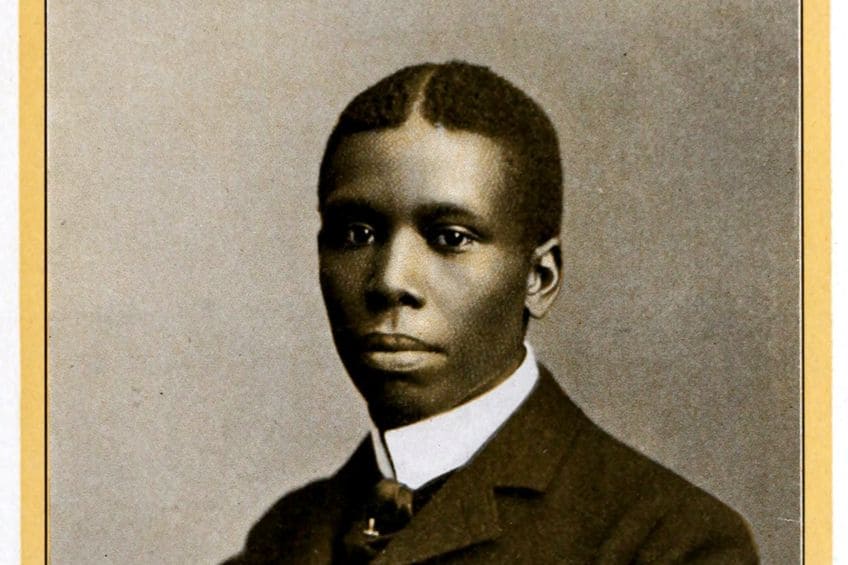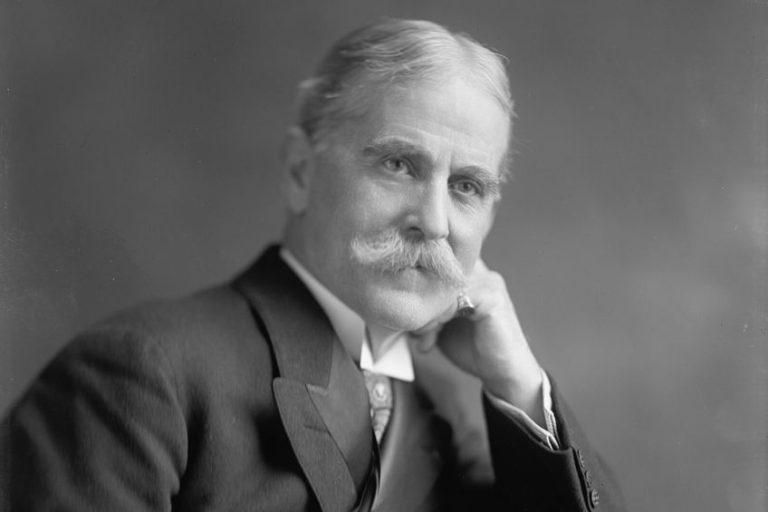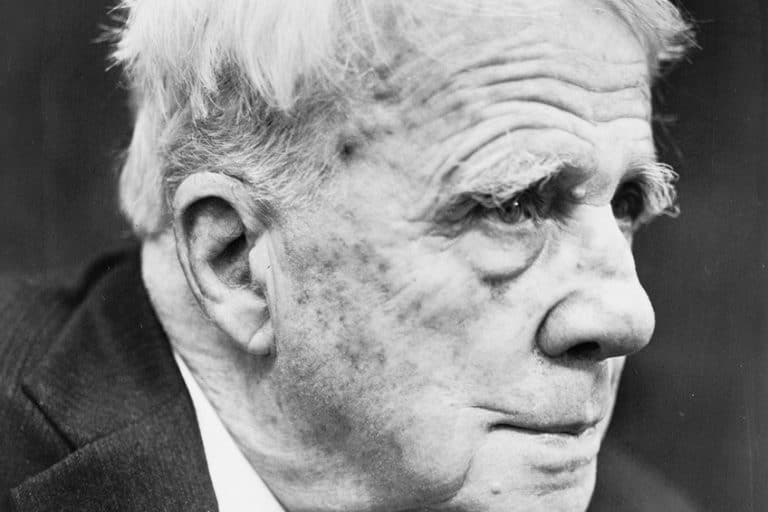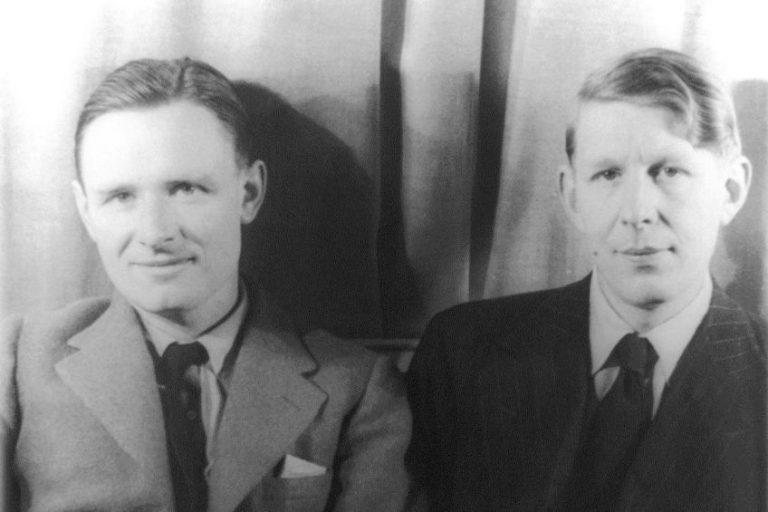“We Wear the Mask” by Paul Laurence Dunbar – An Analysis
There are many fantastic poems by African American writers in the world, but this one is quite special because Paul Laurence Dunbar was one of the earliest African American writers to gain an international audience. This is one of the reasons that we will perform a We Wear the Mask analysis today, alongside a brief discussion of the author and the influence of the poem, to ultimately answer the question: “What is We Wear the Mask about?”. If this is a question that you would like an answer to, then keep reading!
We Wear the Mask by Paul Laurence Dunbar Analysis
| Date Published | 1895 |
| Type of Poem | Rondeau |
| Rhyme Scheme | Predominantly AABB |
| Meter | Iambic tetrameter |
| Topic | African American experience |
Many of the most famous poems by African American people have focused on ideas surrounding oppression and racism, and the difficulties that come with being forced to live through these traumatic experiences. The poem that we will analyze today is no exception to this. However, before we dive into our We Wear the Mask analysis, we will first have a look at a few summarized points.
We Wear the Mask by Paul Laurence Dunbar Summary Points
We do not all always have the time to read through everything. So, for those who need a quick summary of We Wear the Mask by Paul Laurence Dunbar, we have you covered. These points are not comprehensive, but they should help in understanding the poem:
- We Wear the Mask is about racism and oppression. The text deals with the period after the American Civil War and the experiences of African American people in that aftermath. It has remained a stunning poem to aid in understanding the trauma that African American people faced in the country after the abolition of slavery after things were meant to get better.
- We Wear the Mask is a rondeau. This is a form of medieval and Renaissance poetry that has a fixed structure. It is made up of 15 lines and each of them has 8-10 syllables, and these lines are then broken up into three stanzas. These stanzas are made up of a quintet, a quatrain, and a sestet.
- We Wear the Mask has become an influential poem. This poem has managed to become one of the best-known poems written by Paul Laurence Dunbar. This figure was an influential African American writer and his works were read around the world, and this poem has influenced many through that widespread reach.
These few summary points do not go into all that much depth, but if you are interested in We Wear the Mask by Paul Laurence Dunbar in far more detail, keep reading.
After the biography of the poet, we will perform an in-depth We Wear the Mask analysis.
Biography of Paul Laurence Dunbar
| Poetic Movement | Modernism |
| Years | 1872 – 1906 |
| Place of Birth | Dayton, Ohio, United States |
| Known For |
|
Paul Laurence Dunbar was an African-American writer who is known for his poems, short stories, and novels. He was the child of two previously enslaved parents. They had been freed because of that war, and this means that this poet was born only a few years after slavery had come to an end. But this does not mean that racism and oppression in the country have even approached being eradicated.

So, Paul Laurence Dunbar grew up in this world. He would soon go on to become a popular writer and his works gave him an international audience. He was one of the first African Americans to achieve something like this and, as a result, his work had far more reach than many other African American writers at the time. Some of his most important contributions included the use of African-American dialects in his work, and this would have a large influence on other African-American writers. However, he contracted tuberculosis and sadly passed away at the age of 33. There was no means of treating the affliction at the time.
An In-Depth We Wear the Mask Analysis
Before we jump straight into our We Wear the Mask analysis, it should be noted that this poem makes use of a rondeau structure. This is a type of poetry that makes use of a specific arrangement of lines. In this case, it has fifteen lines. These lines are then separated into three stanzas of different lengths. There will be one quintain, quatrain, and sestet. And each of these stanzas is also arranged around a refrain of some kind.
In the case of this particular poem, that refrain is the idea of the masks that are present within the title of the poem.
In terms of each of the actual stanzas in this poem, they predominantly make use of iambic tetrameter. This means that they use a series of unstressed and stressed syllable pairs in each line that total up to eight syllables per line. This metrical structure operates alongside the rhyme scheme found in the poem, and this rhyme scheme is as follows: AABBA AABC AABBAC. So, let’s now dive in!
Stanza One
We wear the mask that grins and lies,
It hides our cheeks and shades our eyes,—
This debt we pay to human guile;
With torn and bleeding hearts we smile,
And mouth with myriad subtleties.
The first line of the poem opens with imagery of mask wearing. This will become the central refrain around which the rest of the poem is structured. It will recur in each of the stanzas going forward. At this point, we do not know what all the mask is for, but we do know that a mask is something that hides us. It hides our expressions and our feelings. Behind a mask, we can hide who we are. And we can also assume that this mask is metaphorical.
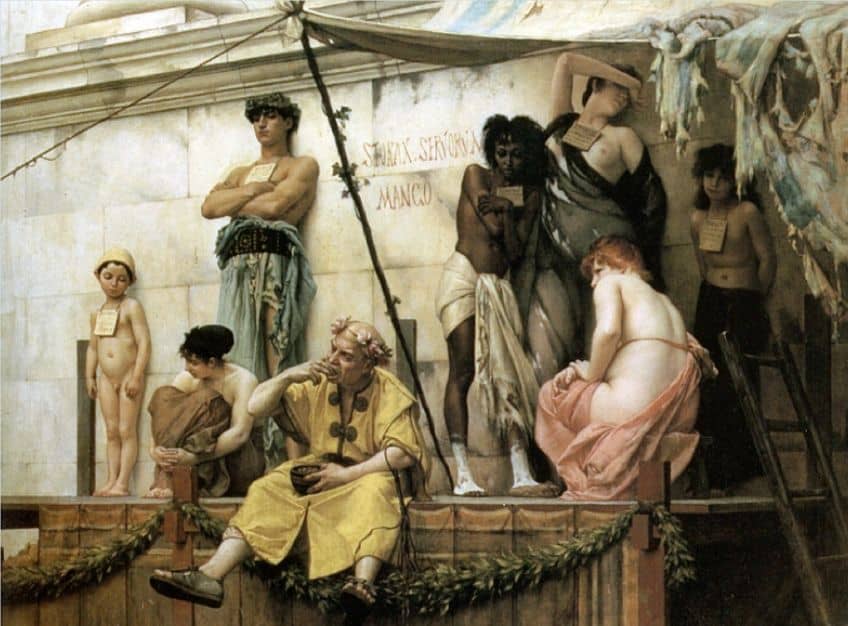
The mask is described as being able to grin and lie to the world. It hides those who wear this mask. Furthermore, the mask is something that is portrayed as something that has “guile”. It is sneaky and duplicitous, but the fourth line breaks down any feeling that this mask is worn for nefarious reasons. It hides the “torn and bleeding hearts” that lay beneath it.
We can already see that these masks that are worn are metaphorical things that hide the pain that is locked away. It is also here where it is good to reiterate that Paul Laurence Dunbar grew up in the aftermath of the conclusion of the American Civil War. His parents had been enslaved, and after the war ended, things were supposed to be better. But many African Americans needed to adopt metaphorical masks to hide and protect themselves.
While race is not explicitly mentioned, the context of the life of the poet shows us these meanings embedded within the text.
Stanza Two
Why should the world be over-wise,
In counting all our tears and sighs?
Nay, let them only see us, while
We wear the mask.
The second stanza opens with a question that stretches over two lines. We are asked why the world itself would pay attention to the tears that are hidden behind those masks. The society around those who wear the masks is an indifferent society. It is one that does not want to hear their woes and their troubles. The rhetorical question that is posed is an immensely sad and heartbreaking one that conveys the feelings of helplessness that can come with being forced to wear the mask.
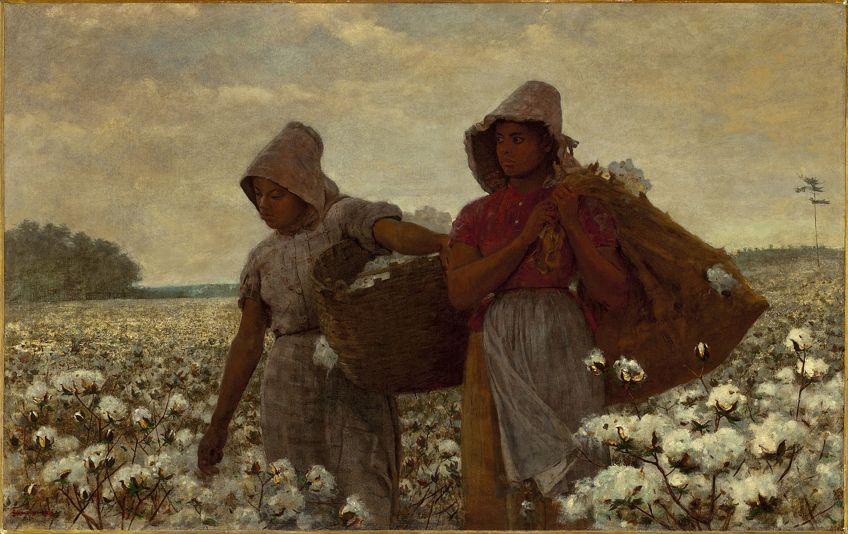
The final two lines of the above are similarly connected to one another. It tells us that the speaker wants society to see them when they have their masks on. They must see the masks and not the reality underneath. The last line repeats the refrain, but we can see that it is stated very bluntly. That is why they wear the masks.
Stanza Three
We smile, but, O great Christ, our cries
To thee from tortured souls arise.
We sing, but oh the clay is vile
Beneath our feet, and long the mile;
But let the world dream otherwise,
We wear the mask!
The last stanza opens with a call to religion. It states that on that mas they smile, but beneath it, they are crying because they are tortured souls that need assistance. This stanza is arranged around three separate images that are each made up of two lines. The first calls to Jesus Christ, and it can be seen as a cry for help, a cry to the divine to aid those who tread upon the earth.

The next two lines repeat a concept used in the first line. While the first line states that “we smile”, the third line states that “we sing”. This is another dishonest reaction that comes from being compelled, and forced by society, to wear the mask. They have to sing to show that they are fine, but the road they walk is long and painful. The use of the road metaphor is also mixed with barefoot pain.
The “clay” beneath them is painful and horrible and they have “long the mile” to walk. This can be seen on a societal level as the need for more progress that still needs to be made for African American people, because the simple end of slavery is not enough. The second-last line has a similar kind of feeling to it as it evokes the idea of dreams.
The world dreams that they are not wearing masks, but the final line reaffirms that “We wear the mask!”.
The final point to make here is that the last line is different from the previous refrain of “we wear the mask” because of the addition of an exclamation point. It is a shout, a scream, a slogan. There is energy and power in maintaining the mask, but as there is still a long and painful road to go, there is still hope. The mask is necessary, but perhaps it will not be necessary forever. And that has been our examination of We Wear the Mask by Paul Laurence Dunbar.
The Themes of We Wear the Mask by Paul Laurence Dunbar
When looking at the themes of a poem like this, we may wish to ask ourselves: “What is We Wear the Mask about?”. The most obvious of all the themes that can be gleaned from a We Wear the Mask analysis would be the ideas surrounding oppression and racism. The poem takes pains to explore these kinds of ideas and the effects that they have on the people who are forced to live through them.

In addition to this, through the metaphor of the mask, we can see the theme of necessary duplicity. Someone in this situation may need to be “two-faced” to survive. They need to hide themselves from the world and not show their emotion and pain in case someone tries to take their new lives from them. However, there are also themes of empowerment, of facing hardships in the world and refusing to give in to them.
It may be a poem about oppression, but it is also a poem about standing up to oppression and refusing to give in to it.
The Influence of We Wear the Mask by Paul Laurence Dunbar
We Wear the Mask by Paul Laurence Dunbar has remained an influential text over the years. Seeing as Paul Laurence Dunbar was one of the earliest African American writers to have gained an international audience, this text would have found its way to many of the corners of the glove.
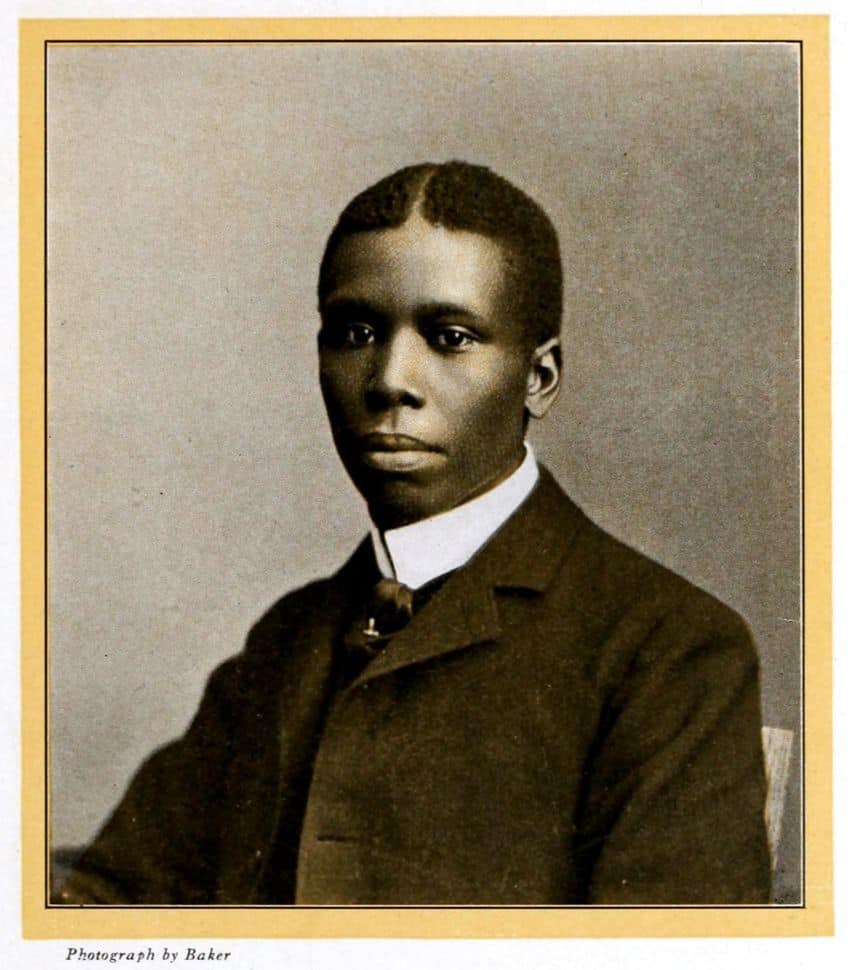
The examination of the African American experience, the use of the mask metaphor, and the themes of preservation of dignity and the need for duplicity in the face of oppression have led to this being a potent and influential text. In addition, there may have been some influence on a poem like this, seeing as there are certain similarities in the name, with Black Skin, White Masks by Frantz Fanon. The influence of poems of this nature tends to stick around long after the poet has passed from this world, and that was very much the case with We Wear the Mask by Paul Laurence Dunbar.
This has been our analysis and discussion of We Wear the Mask by Paul Laurence Dunbar. Over the course of our We Wear the Mask analysis, we have examined the biography of the writer, the themes of the poem, and the influence that it exerted. This is only one of the many phenomenal poems by Paul Laurence Dunbar, and so, if you enjoyed this analysis, there are many other poems of his that are worth reading!
Frequently Asked Questions
What Is We Wear the Mask by Paul Laurence Dunbar?
This is a poem by the African American poet and novelist, Paul Laurence Dunbar. This poem serves as a reaction to the kind of experiences that he faced as a black man in the late-19th century in the United States.
Who Was Paul Laurence Dunbar?
This figure was a poet and novelist who passed away shortly into the 20th century. He was the child of previously enslaved African Americans, and he started writing as a child. He would go on to international recognition and was one of the earliest African American writers to grow an audience of this size.
What Is We Wear the Mask About?
This poem makes use of the metaphor of a mask to deal with the idea of concealment, because as an African American person who lived in the post-Civil War era and was the child of previously enslaved people, Paul Laurence Dunbar needed to hide his true feelings to survive. This poem is about those kinds of feelings and ideas.
What Are the Themes of We Wear the Mask by Paul Laurence Dunbar?
Some of the central themes of We Wear the Mask by Paul Laurence Dunbar revolve around oppression and racism. In addition, there is the examination of the need for duplicity in hiding oneself within an oppressive system. This is a powerful poem for understanding the post-Civil War mentality of African American people.
What Are the Other Famous Texts by Paul Laurence Dunbar?
Paul Laurence Dunbar wrote many things over his life, and some of the most famous include the poem We Wear the Mask (1895), the short story collection Folks From Dixie (1898), and the novel The Sport of the Gods (1902).
Justin van Huyssteen is a freelance writer, novelist, and academic originally from Cape Town, South Africa. At present, he has a bachelor’s degree in English and literary theory and an honor’s degree in literary theory. He is currently working towards his master’s degree in literary theory with a focus on animal studies, critical theory, and semiotics within literature. As a novelist and freelancer, he often writes under the pen name L.C. Lupus.
Justin’s preferred literary movements include modern and postmodern literature with literary fiction and genre fiction like sci-fi, post-apocalyptic, and horror being of particular interest. His academia extends to his interest in prose and narratology. He enjoys analyzing a variety of mediums through a literary lens, such as graphic novels, film, and video games.
Justin is working for artincontext.org as an author and content writer since 2022. He is responsible for all blog posts about architecture, literature and poetry.
Learn more about Justin van Huyssteen and the Art in Context Team.
Cite this Article
Justin, van Huyssteen, ““We Wear the Mask” by Paul Laurence Dunbar – An Analysis.” Art in Context. December 6, 2023. URL: https://artincontext.org/we-wear-the-mask-by-paul-laurence-dunbar/
van Huyssteen, J. (2023, 6 December). “We Wear the Mask” by Paul Laurence Dunbar – An Analysis. Art in Context. https://artincontext.org/we-wear-the-mask-by-paul-laurence-dunbar/
van Huyssteen, Justin. ““We Wear the Mask” by Paul Laurence Dunbar – An Analysis.” Art in Context, December 6, 2023. https://artincontext.org/we-wear-the-mask-by-paul-laurence-dunbar/.


